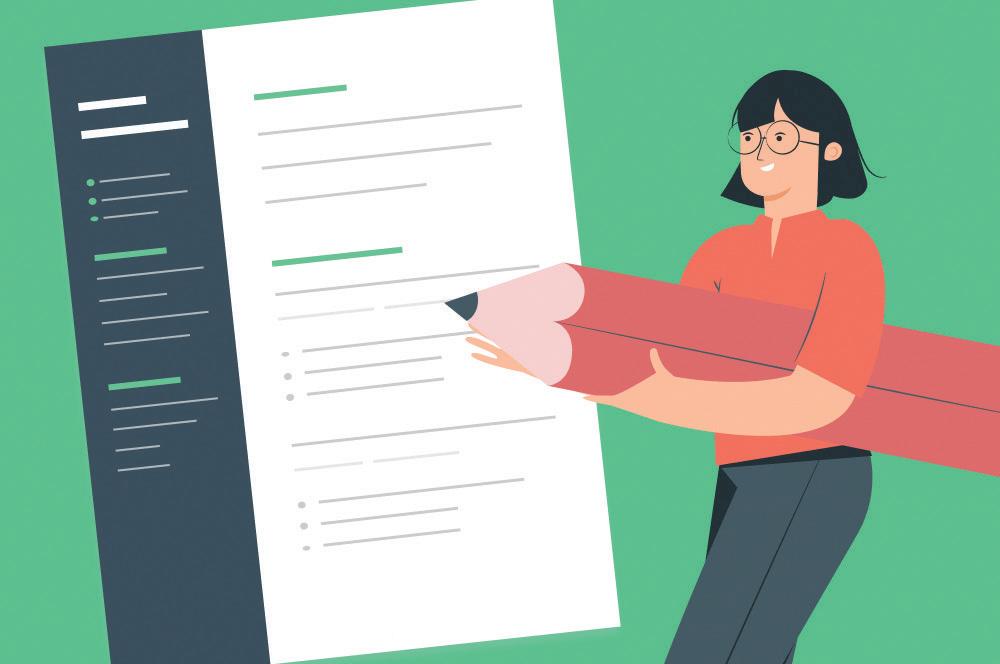
4 minute read
Cynthia Ford: Effective Resumés: What You Can Do To Make Yours Stand Out
from September 2022
by VIP Magazine
Effective Resumés:
What You Can Do To Make Yours Stand Out
Advertisement
story by Cynthia Ford
The first existence of a resumé is traced back to Leonardo Da Vinci in 1482. The resumé allowed Da Vinci to expound on his talents as he sought additional work. Resumés are a general summary of who you are, your experiences, and what you can offer to companies. Resumés should be updated depending on who will receive the resumé and to update any information that may change about the job seeker. Traditional resumés maintain a modest appearance with the candidate's name affixed up top, followed by their contact information, educational history, objective, employment history, skills, and references. This format allows for a clean appearance and streamlines the essential information employers seek from potential candidates. There is no universal requirement for resumés at this time. The format for them has expanded to offer multiple format options, depending on the employer. The types of resumés include chronological, functional, combination, infographic, targeted, nontraditional, and mini. Chronological resumés mirror the traditional format and are usually beneficial for those with a strong employment history. A functional resumé highlights more of your skills and experiences than your work. This is a great format to use if you have a limited work history or for those who choose not to highlight their work history. A combination resumé is a combination of functional and chronological. Infographic resumés use a variety of words and graphics. The graphics represent the level and/or length of a particular attribute. With targeted resumés, candidates add skills that relate to the job description. Nontraditional resumés include items such as videos or social media sites. This resumé allows employers to see a glimpse of the candidate's personality and potential to fulfill the job based on their skills and experiences. A mini resumé is a summary of highlights. What is your resumé saying about you? If you have not updated your resumé in a while, now is a perfect time. Decide what type of resumé you wish to create. Design your resumé based on who would receive it. Ensure that the information noted accurately reflects what employers seek. Microsoft Word offers multiple resumé templates that have made the creation much more effortless than drafting from scratch. To try this process, open Microsoft Word, select file, new, type resumé in the search bar, and press enter. Various styles will populate. Select the style that best suits your interest. Update the template to include your information, review it for accuracy and save it to your device. Microsoft Word also offers cover letters with matching designs. Follow the same steps to explore cover letters. Remember to save your work as a pdf file so others can not edit it. Some employers require resumés only, and some request a cover letter along with the resumé. A cover letter will briefly express your interest in the job and describes how your attributes relate to the
position. The cover letter is usually three or four paragraphs. If you do not have the point of contact's name for the letter, note a salutation such as: Dear Sir or Ma'am or Dear Hiring Manager. The cover letter is not used to restate everything on the resumé but shows your interest in the position. It is appropriate to highlight your skills and why you would be the best candidate for the position. One final piece to prepare to update is your references. You may note on your resumé that references may be available upon request, or you may cite the contacts on a separate sheet. It is best practice to have both personal and professional references. For personal references, it is best not to use immediate family members but others who may be acquainted with your work or experiences. These experiences can include paid or unpaid. Before including a reference, seek their permission to be listed as a reference and to share their contact information. The contact information may include their telephone number, email address, and/or mailing address. You may note all three or choose which contact information you prefer to share. Make the references aware of the position you are applying for and expect to be contacted by a potential employer. Amend your resumé as needed to fit the positions you are applying for. If you are submitting a printed copy, use resumé paper. Resumé paper provides a professional, crisp appearance and helps your resumé stand out. Employers are often faced with reviewing multiple applicants and cover letters. You are responsible for crafting a document that stands out from other candidates. Resumés and cover letters are a part of your first impression of a potential employer. Let your resumé pave the way of success for you.
TIP
Improving your resume regularly can also help you apply for promotions at your current company. By promptly submitting your resume for an internal position, you show your employer you’re self-motivated, organized, and fully prepared to take on a new role.










